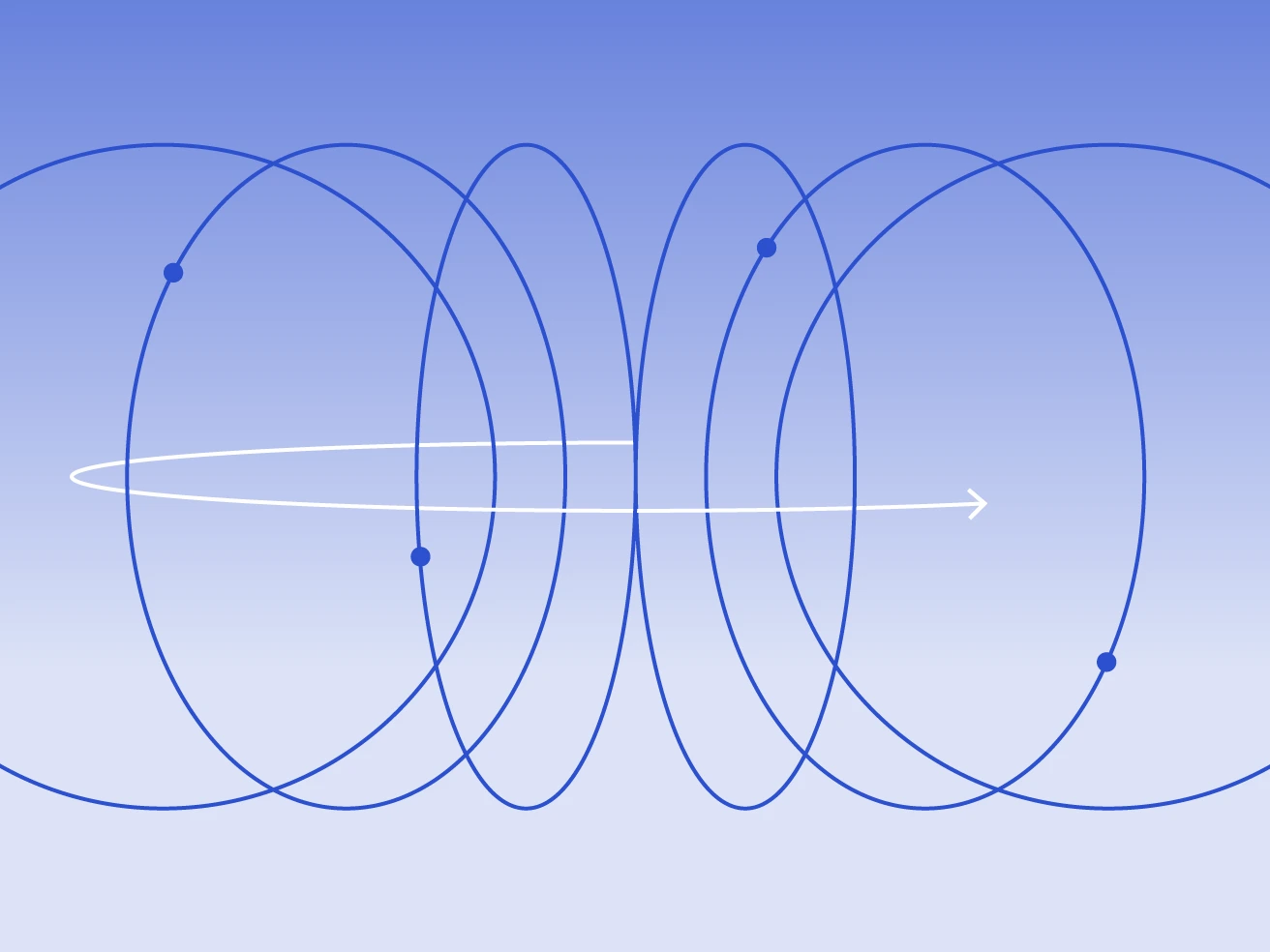
What is purchase order management? A comprehensive guide [2025]
Discover top strategies to optimize procurement accuracy and save time.

Procurement is a sophisticated business. At first, it seems like the purchasing flow is a simple process any finance team can quickly whip together.
But the deeper you understand the official documents, processes, and protocols necessary to ensure compliance and efficiency, the sooner you understand that the purchasing department has a complex but important role in driving impact on growth and the bottom line.
But how can organizations efficiently drive operations through procurement? The answer lies in strategic purchase order management.
By transitioning from traditional methods to integrated, automated, and orchestrated procurement platforms like Zip, businesses can elevate procurement's role in strategy and impact through every step of the process.
What is purchase order management?
Purchase order management, also known as PO management, is the process of creating, tracking, and managing purchase orders (POs) to ensure efficient procurement of goods and services.
It involves overseeing and managing the creation, approval, and tracking of purchase orders within an organization.
This process ensures efficient and cost-effective purchasing operations. By streamlining the procurement process, companies can minimize human error, optimize inventory management, and maintain accurate records, enhancing overall business operations.
Purchase order process
Fortunately, the PO process has a simple and standardized workflow consisting of several stages, from initiation to closure:
- Identifying a need: The process starts when a department or team identifies a need for goods or services. This could be due to inventory depletion, upcoming projects, or operational requirements. At this stage, businesses assess factors like budget constraints, urgency, and supplier availability.
- Purchase request: A purchase requisition form is created and submitted internally, detailing the required items, estimated cost, quantity, and justification for the purchase. This document ensures transparency and prevents unauthorized spending.
- Approval process: The purchase requisition goes through an approval workflow, typically reviewed by department heads, procurement teams, or finance personnel. Approvers assess whether the request aligns with budgetary constraints, company policies, and supplier agreements before granting authorization.
- Purchase order creation: Once approved, a purchase order is created, detailing the order specifics, such as the PO number, supplier information, and order details.
- Issuance to supplier: The completed PO is sent to the supplier, officially initiating the purchase. Once received, the supplier confirms the order, acknowledges the terms, and begins processing. This step serves as a legally binding agreement between both parties.
- Receipt of goods or services: Upon delivery, the receiving department inspects the goods or services to ensure they match the PO specifications. Any discrepancies, damages, or shortages are documented, and the supplier is contacted if adjustments are needed.
- Payment: Once the order is verified, an invoice is matched against the PO and receiving report. The finance team processes the payment according to agreed-upon terms, completing the transaction.

Benefits of an effective purchase order system
Implementing a dedicated purchase order system offers numerous advantages that can significantly enhance procurement operations. Key benefits include:
Improved procurement efficiency
A dedicated purchase order management system automates manual processes, reducing the time spent on data entry and manual purchase order creation. This streamlines the workflow, enabling procurement teams to focus on strategic tasks rather than routine administrative work.
Enhanced supplier relationships
By providing a standardized and transparent process, a purchase order system fosters better communication and reliability with suppliers. Consistent and timely PO approval and routing help maintain strong supplier relationships, ensuring better terms and service.
Improved financial control
An effective purchase order system offers greater visibility into procurement spend, enabling better budget control and financial planning. Real-time tracking and reporting ensure all purchases are accounted for and aligned with the organization's financial goals.
Reduced errors
Effective purchase order management minimizes errors by standardizing the procurement process, ensuring all purchase details—such as quantities, pricing, and supplier terms—are accurately recorded and approved before an order is placed.
This structured approach reduces mismatches between purchase orders, invoices, and received goods, preventing payment disputes and accounting discrepancies.
Zip contributes to achieving these benefits through features like real-time reporting and tracking, role-based permissions, and automation, ensuring procurement operations are efficient, transparent, and well-controlled.
Best practices for purchase order management
Effective purchase order management involves several opportunities and strategies to optimize the process. While it has historically been labor-intensive and time-consuming, new tools and technologies have helped streamline the PO process, freeing up valuable time for strategic work.
Automate processes
Using purchase order management software reduces manual data entry, minimizes errors, and speeds up approvals. Automation enables real-time tracking, automated data extraction from invoices, and alerts for missing approvals or discrepancies. For example, setting up automatic three-way matching (PO, invoice, and receipt) ensures accuracy before payments are processed.
Standardize templates
Developing standardized PO templates ensures consistency and reduces miscommunication. Templates should include essential details like supplier information, order descriptions, quantities, pricing, delivery terms, and payment conditions. Using pre-set templates in procurement software can streamline order creation and approval even further.
Establish approval workflows
A structured approval workflow ensures purchase orders are reviewed by the right stakeholders before issuance. Define approval hierarchies based on purchase value or department, setting up automated routing for efficiency. For instance, low-cost orders might only require department head approval, while high-value purchases need finance and executive sign-off.
Integrate procurement systems
Centralizing purchase order management with an integrated procurement platform like Zip enhances visibility and collaboration across departments. Integration with accounting, inventory, and supplier management systems ensures real-time data synchronization, reducing delays and improving financial tracking.
Strengthen supplier relationships
Clear and proactive communication with vendors helps set expectations for delivery timelines, payment terms, and quality standards. Establish service-level agreements (SLAs) that outline responsibilities and define escalation procedures for delays or discrepancies. It's also a good idea to hold regular performance reviews with key suppliers to improve order fulfillment efficiency.
Ensure order specifications
Detailed purchase orders reduce the risk of incorrect or substandard deliveries. Each PO should include product descriptions, model numbers, quality standards, quantities, and any required certifications. For example, specifying "Grade A industrial steel, 10mm thickness, ISO-certified" ensures vendors deliver the exact materials you need.
Pro tip: A vendor evaluation matrix gives you a visual side-by-side comparison of each vendor's performance across the criteria that matter most to your business. The vendor with the highest total score is likely the best fit based on your evaluation.

Challenges in purchase order management
As simple as the workflow sounds, there can be problems while working throughout the process, even outside of normal supply chain challenges outside of your control. Here are some of the issues worth keeping an eye on internally.
- Lack of standardization: Inconsistent formats and procedures can lead to confusion and inefficiencies, making it difficult to track orders accurately.
- Pro tip: Establish company-wide standardized PO templates and workflows to ensure consistency. Using procurement software with built-in templates can further streamline the process.
- Communication gaps: Subpar communication between departments, such as procurement, finance, and inventory teams, can cause delays, duplicate orders, or missing approvals.
- Pro tip: Implement a centralized purchase order system that gives real-time updates and notifications to all stakeholders for seamless collaboration.
- Data discrepancies: Errors in order details, pricing, or supplier information can lead to mismatched invoices, payment delays, and incorrect deliveries.
- Pro tip: Use automated purchase order management tools with real-time data validation and integration with accounting systems to reduce manual errors and discrepancies.
Centralized systems and integrated procurement platforms like Zip can help. These solutions ensure consistency, transparency, and efficient communication, ultimately improving the purchase order management process.
Optimize purchase order management with Zip
To fully realize the benefits of effective purchase order management, adopting a comprehensive solution like Zip is the key to success. Zip's automated purchase order management streamlines procurement, reduces errors, and improves compliance. This minimizes manual input, allowing teams to focus on strategic tasks.
Automated PO creation simplifies adherence to procurement policies, making it easier for employees to comply without extensive training. Seamless AP visibility ensures accurate financial tracking, while real-time analytics provide insights for budget control and cost savings. By leveraging automation, businesses can enhance efficiency, improve accuracy, and optimize procurement processes.
Request a demo to see how Zip can transform your purchase order management process.
FAQ
What is the difference between a purchase requisition vs. purchase order?
A purchase requisition (PR) is an internal request to procure goods or services, serving as the first step in the procurement process. A purchase order (PO) is a formal document sent to a supplier, outlining order details, payment terms, and delivery expectations. While a PR seeks internal approval, a PO finalizes the transaction with the vendor.
Why is purchase management important?
Purchase management ensures a structured, efficient, and cost-effective procurement process. It helps businesses control spending, maintain accurate financial records, and prevent procurement errors.
By standardizing workflows, organizations can reduce delays, improve supplier relationships, and ensure compliance with budgetary and policy requirements. Effective purchase management also boosts transparency, allowing for better tracking of expenses and inventory.
How do you control a purchase order?
Controlling a purchase order requires a structured approval workflow, real-time tracking, and strict adherence to procurement policies. Setting up automated approval hierarchies ensures that only authorized personnel can approve purchases based on budget limits.
Using a centralized system to monitor order status, verify deliveries, and match invoices to POs can also help prevent fraud, overpayments, and discrepancies. Regular audits and reporting further ensure compliance and financial accuracy.
How does purchase management software help?
Purchase management software automates and streamlines procurement by reducing manual tasks, minimizing errors, and ensuring policy compliance. It provides real-time tracking of purchase requests, approvals, and deliveries, improving visibility across departments.
Features like automated invoice matching, data extraction, and analytics help businesses control costs, enhance supplier collaboration, and make data-driven purchasing decisions.

Maximize the ROI of your business spend

Enter your business email to keep reading



























.webp)



















.avif)











.avif)










.webp)





.avif)












.avif)
